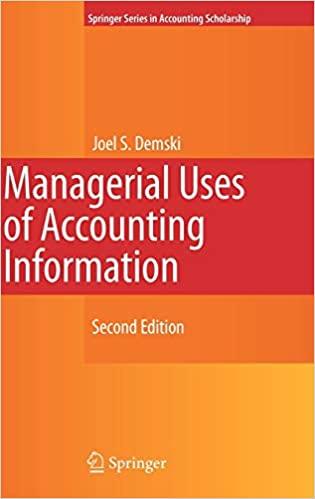12. actual versus normal costing Return to the setting of Ralphs Firm, problem 13 in Chapter 5....
Question:
12. actual versus normal costing Return to the setting of Ralph’s Firm, problem 13 in Chapter 5. After reflection and analysis, Ralph concludes that total manufacturing overhead (OV ) is best described with a linear model of the following form: OVt = α + βyt + ǫt. α and β are constants, yt is the total of direct labor cost plus direct material cost in period t, ǫt is a zero mean random error term in period t (arising from such things as weather, shop floor congestion, and so on), and OVt is total manufacturing overhead in period t.
Ralph speculates that α = 20, 000 and β = 1.00. Ralph also speculates that manufacturing during the period in question will result in yt = 20, 000; i.e., direct labor and direct material will total 20, 000.
Using the output and cost data in the original problem, consider the following.
(a) Suppose Ralph uses this analysis and speculation to implement a normal, full costing procedure. Determine the unit cost for each product. Further suppose half of the current period production of A and B has been sold. Determine ending finished goods inventory and cost of goods sold.
(b) Carefully discuss how Ralph’s specification of the overhead LLA removes the ambiguity encountered in the original problem.
(c) Repeat part (a), assuming Ralph uses a normal, variable costing system.
Step by Step Answer:






